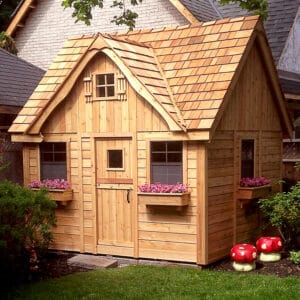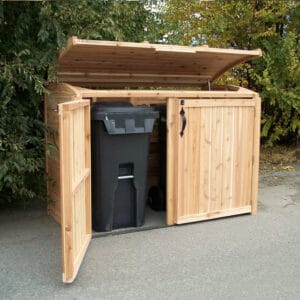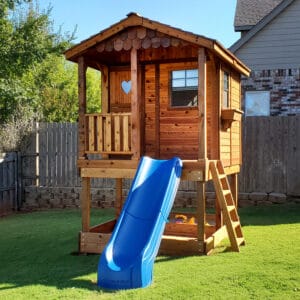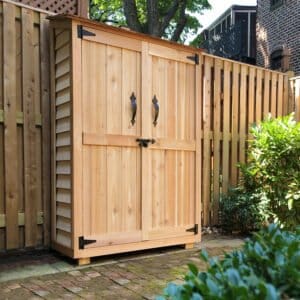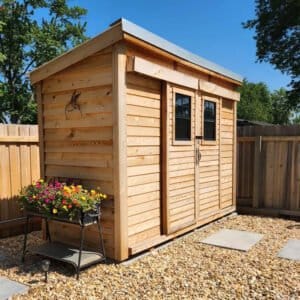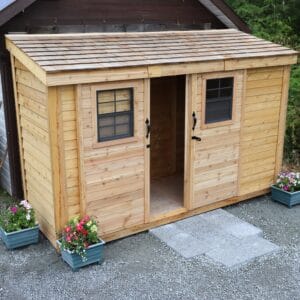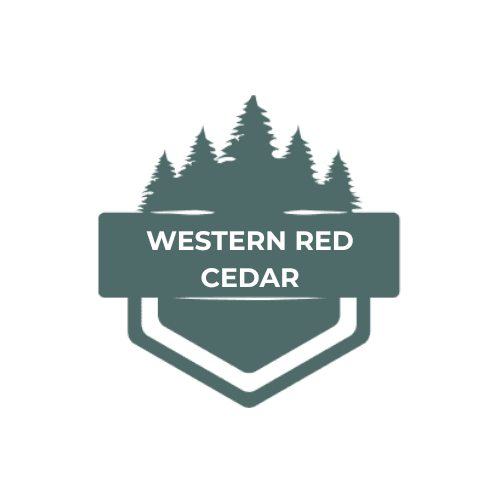No products in the cart.
June 12, 2019
Outdoor products made of wood look great and are resilient and long-lasting. It’s why many homeowners opt for dog houses, gardening kits, gazebos, playhouses, and pergolas made of wood. Cedar is the commonly used timber in all of these features. Cedar has several qualities that lend themselves very well to the construction of outdoor structures such as the ones we just talked about.
Qualities of Western Red Cedar Wood
Western Red Cedar is naturally resistant to water, decay, and bugs, ages gracefully and is exceptionally sturdy. Its grain has inbuilt air pockets that protect it from changes in temperature. It is also very heavy and can withstand windy conditions well as long as the structures have been installed well.
Aside from this, Western Red Cedar is also low maintenance and extremely cost-effective, which makes it the perfect material even for large scale outdoor projects. We at Outdoor Living Today have a wide variety of outdoor products made of Cedar that provide excellent value to our customers.
There are many other hardwoods like Redwood, Cypress, White Oak, Ipe, Teak and Mahogany and more that can be used to significant effect in outdoor areas. Regardless of the wood used, you would need to maintain the features well to keep them resilient.
What Causes Wood Decay and Degradation?
Before we take a look at how to reduce premature wood decay and degradation of your outdoor products, let’s understand what causes these problems. Decay fungi break down the cellular structure of wooden structures which results in strength loss.
The fungi secrete enzymes or produce chemical reactions that dissolve various constituents of the wood cell walls. This kind of activity is apparent when the wooden features become either lighter or darker than the surrounding wood. Sometimes, it may develop cracks or checks and will also become much softer than what it originally was.
Wood degradation isn’t the same as decay in wood. The three main reasons for wood degradation are weathering, insects, and fungi (decay/rot). Also, fire can degrade wooden features.
Tips To Reduce Decay And Degradation In Outdoor Wooden Structures
Decay fungi need oxygen, water, moderate temperatures, and food (wood) to survive. Depriving these fungi of their food source is one of the best ways to prevent premature wood decay. Some of the things to do include:
- Outdoor features should be built with natural Western Red Cedar wood or chemically impregnated pressure-treated wood. The timber is treated using chemical wood preservatives, and these chemicals seep into the wood fibers making it resistant to fungal decay. In our opinion, choosing the natural cedar option is far superior.
- Even when pressure-treated wood has been used, you need to control moisture as that will slow down the fungal growth that your outdoor features are exposed to. This also means the wood preservatives alone can’t prevent the wood from absorbing water. It is necessary to supplement the protection with a specialized water-repellent finish. This will also reduce the amount of time you spend checking and weathering any of the exposed wood features on your property.
- If you have noticed some signs of wood rot on the structure, you need to take specific steps to prevent it from spreading to the rest of the pergola, gazebo, or other feature. To stop dry/wet wood rot, you’d have to kill the fungus by eliminating the moisture and then poisoning the microbe.
- If you do not necessarily want a natural wood finish on the outdoor features, you can choose to get them painted. Opaque paint has a very high pigment content. The optimum film build provides long-lasting protection for the wooden surfaces and protects them against weathering. It’s best to get the wood factory painted. However, if you are painting the pergola or any other feature on site, it would have to be primed/undercoated. The next step is to apply a topcoat; this will protect it from the elements.
- When painting, make sure that the surface moisture content doesn’t exceed 16 percent. The rule applies to any wood species.
- Clear varnish and unpigmented oil are another option to protect the wood and prevent premature degradation. These are non-film-forming or may have a very low film build. The finishes allow the grain and character of the wooden surfaces to be visible and will protect them from moisture. However, they do not offer any UV- protection, which means the wooden feature will change color with age. If you are planning to paint the structure in the future, it’s best to avoid oils that have wax content. Our recommendation is to always discuss your painting and staining questions with a qualified retailer such as Benjamin Moore.
- Wood stains offer a certain amount of protection from the weather and can help reduce degradation of your outdoor product. They do not have a high pigment content, and you can see the character of the wood very clearly. Re-application is needed every few years to maintain the protective layer.
- Translucent coatings give the wood surfaces a paint-like film finish, but you would still be able to see the character of the wood through the finish. Depending on the location of the feature, you may need to re-apply the topcoat. This will keep the deck/structure looking new, and the wood will be fully protected as well.
It prevents moisture from seeping into the wood and reduces premature degradation of the feature. It’s crucial that you use boiled linseed oil and apply it correctly to provide weather protection for your deck.
As you can see, there are several ways in which you can reduce premature wood decay and degradation of your outdoor product. For any more information about our Cedar products, feel free to contact Outdoor Living Today at 888-658-1658.
June 12, 2019
-
 On SaleSale!%Off10Save $957957$10%957$On SaleSale!%Off10Save $957957$10%957$
On SaleSale!%Off10Save $957957$10%957$On SaleSale!%Off10Save $957957$10%957$ -

-
 On SaleSale!%Off15Save $709709$15%709$On SaleSale!%Off15Save $709709$15%709$
On SaleSale!%Off15Save $709709$15%709$On SaleSale!%Off15Save $709709$15%709$ -
 On SaleSale!%Off30Save $405405$30%405$On SaleSale!%Off30Save $405405$30%405$
On SaleSale!%Off30Save $405405$30%405$On SaleSale!%Off30Save $405405$30%405$ -
 On SaleSale!%Off7Save $339339$7%339$On SaleSale!%Off6Save $260260$6%260$On SaleSale!%Off11Save $485485$11%485$On SaleSale!%Off11Save $485485$11%485$
On SaleSale!%Off7Save $339339$7%339$On SaleSale!%Off6Save $260260$6%260$On SaleSale!%Off11Save $485485$11%485$On SaleSale!%Off11Save $485485$11%485$ -


